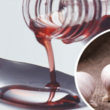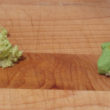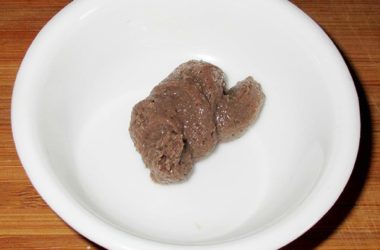Lactose intolerance is the term used to refer to a person’s inability to digest lactose which is the main sugar in dairy and milk products. This condition can cause multiple symptoms such as bloating, nausea, diarrhea, rumbling tummy, stomach aches, gas, vomiting, flatulence and other gastrointestinal illnesses after you eat or drink dairy or milk products.
Intolerance to lactose can also be due to insufficient levels of the enzyme lactase which is essential in breaking down lactose. The symptoms can be from mild to extreme depending on how much lactase is produced in your small intestine.
Among the causes of intolerance of lactose are digestive issues like celiac disease, gastroenteritis, Crohn’s disease, ulcerative colitis, and of course, genetics. Lactose intolerance can also occur naturally as you age since the small intestine will be producing less lactase.
There are some who confuse lactose intolerance with milk allergy. The latter occurs when the immune system overreacts to the proteins found in milk.
Unlike those who are suffering from milk allergies, those who are lactose intolerant can actually consume small amounts of dairy and milk products without any side effects which is why they don’t really need to stop consuming milk and dairy products. The threshold, however, for lactose tolerance varies from one person to the next.
Although there is no treatment for being lactose intolerant, you can simply reduce your intake of milk, dairy products, and other foods that contain lactose. Keep in mind that lactose and milk can also be found in prepared foods such as cream soups, sherbet, cereals, pancakes, non-dairy creamers and others which are not usually placed in the aisle for dairy products.
You should also get advice from your doctor to get the right diagnosis as well as treatment. You can be directed to a dietitian for additional recommendation and education.
10 Ways to Deal with Lactose Intolerance
1. Cheese and yogurt.
Most of those who are lactose intolerant can still consume hard cheese and yogurt in moderate amounts because they have lower lactose levels. Dairy products that are full-fat also have lower lactose levels compared to non-fat and low-fat varieties. The fat hinders the flow of lactose in the body’s digestive system. What you should do is to go for probiotic yogurt that contains live cultures. The live cultures will be the ones to break down the lactose as well as provide relief discomfort in the gastrointestinal tract. Greek yogurt also has lower levels of lactose compared to regular yogurt because the whey protein is usually strained during the processing phase. However, frozen yogurt may not be of any help. Full-fat cottage cheese and even aged hard cheeses like Swiss cheese and cheddar can be eaten.
2. Milk substitutes.
Go for soy milk, rice milk, hemp milk, coconut milk, almond milk, oat milk and others in place of milk. If you are not used to their taste, start adding them slowly in your baked goods and puddings in place of milk. Begin with small amounts of plant-based milks that are fortified with vitamin D and calcium. You can also use coconut oil instead of butter including applesauce, prune, banana, and other fruit purees. Take note, however, that some non-dairy products may cause problems in your gastrointestinal tract since they have guar gum for thickness.
3. Apple cider vinegar.
This natural treatment can help with your digestion as well as lower your intolerance to lactose particularly during its earlier stages. ACV is also effective in neutralizing the acid in your stomach as well as other problems in your digestive system due to lactose intolerance. In a glass of water, add a tablespoon of unfiltered, raw apple cider vinegar. Drink the mixture daily for about two weeks.
4. Chamomile.
You can find relief from the discomfort due to lactose intolerance by consuming chamomile tea. This tea helps in neutralizing acid in the stomach not to mention reduce your bloating. An added benefit of chamomile tea is that it helps you to relax. In a cup with hot water, add two teaspoons of your dried chamomile flowers. Cover the cup and let the flowers steep for 5 minutes then strain. Drink the herbal tea a few times daily.
5. Check labels on products.
There are some processed and packaged foods that contain lactose. You should read the nutrition labels in order to determine if there are byproducts of milk, milk, dry milk powder that is non-fat as well as dry milk solids. Breakfast cereal,s non-dairy creamers, margarine, breads, instant soups, candies, salad dressings, processed meats, and other baked products have lactose and milk. You can still go for products that have reduced lactose content or free from lactose.
6. Determine your threshold for lactose.
Lactose intolerance varies from one person to the next. To determine your tolerance for lactose, avoid eating any lactose products for 3 to 4 weeks to get it out of your system. Start adding small amounts of cheese and milk to your daily diet and pay attention to any symptoms to determine how much you can consume before the side effects appear. Based on the study conducted by the EFSA or European Food Safety Authority back in 2010, the researchers determined that most people who are lactose intolerant or have lactose maldigestion can only tolerate up to 12 grams of lactose in a single dose, particularly when eaten along with other food. The precise threshold, however, that will be applicable to many can’t be determined due to individual tolerances. Simply put, when you drink or eat dairy products, opt for the smaller servings such as ½ cup or 4 ounces at a time. This will minimize your gastrointestinal problems. Also, consuming milk with other types of foods can help reduce the effects of lactose intolerance by slowing your digestion.
7. Kefir.
Kefir, just like yogurt, can be consumed as probiotic for a healthier digestive system. According to a study that was posted in the Journal of the American Dietetic Association, researchers have discovered that kefir and yogurt can help boost the digestion of lactose as well as minimizing the effects of lactose intolerance. The participants said that consuming kefir has reduced their flatulence by more than half of the frequency compared to milk. The lactose found in the digestive tract is broken down by the live bacterial cultures found in kefir. Also, this product contains potassium, calcium, including protein. All you have to do is to drink ½ cup of kefir milk regularly then slowly raise the amount depending on your tolerance.
8. Lactase supplement.
Taking lactase supplements can help take the place of lactase enzymes that is not produced by the body. This enables you to digest the lactose which in turn, can reduce problems in your GI. The supplements should be consumed when you eat foods that have lactose. You need to take 1 up to 3 lactase tablets prior to eating foods that have lactose. You can even add 2,000 IU lactase supplement to 2 cups or 500 ml of milk before you drink it. Keep in mind that these supplements are not recommended to pregnant women as well as young children. Also, these supplements may not be effective for everyone.
9. Ginger.
You can find relief from your gastrointestinal issues that are caused by lactose intolerance or even indigestion by taking ginger as it helps in reducing abdominal gas and nausea. In a cup of boiling water, add a teaspoon of ginger that is freshly grated. Let it simmer for a couple of minutes before straining. Add a little honey and lemon to it if you want. You should drink up to 3 cups of this ginger tea every day to get rid of the symptoms.
10. Get essential nutrients.
Since dairy and milk products contain several essential nutrients like calcium, reducing your intake can cause you to lose important nutrients. Calcium is needed for healthy bones and teeth which is why you need to look for other options and to make smart choices to ensure that you have all the nutrients that you need in your diet. Go for whole grains, lentils, soy products, nuts and seeds, juices that are fortified with calcium, beans, green leafy veggies such as collards, spinach, and broccoli, as well as blackstrap molasses, and dried fruits because they can provide your body with essential fatty acids, minerals, and vitamins. You should also talk to your doctor about taking supplements for vitamin D and calcium.












